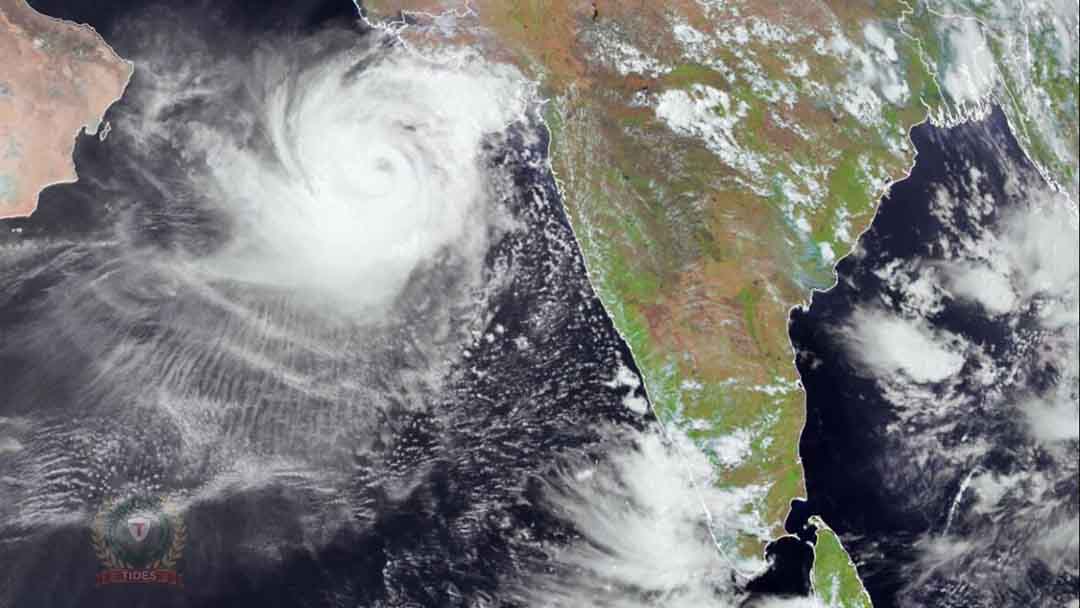 Cyclone Biparjoy was the first storm brewing in the Arabian Sea in the year 2023. It rapidly intensified into a severe cyclonic storm, with wind speeds reaching up to 170 kilometers per hour. It also had a significant impact on the onset and progress of the monsoon rains in India, delaying them by several days. In this write up, we will explore the origin, evolution, and effects of cyclone Biparjoy, as well as the meaning and origin of its name.
Cyclone Biparjoy was the first storm brewing in the Arabian Sea in the year 2023. It rapidly intensified into a severe cyclonic storm, with wind speeds reaching up to 170 kilometers per hour. It also had a significant impact on the onset and progress of the monsoon rains in India, delaying them by several days. In this write up, we will explore the origin, evolution, and effects of cyclone Biparjoy, as well as the meaning and origin of its name.
Origin and Evolution of Cyclone Biparjoy
Cyclone Biparjoy originated from a low-pressure area that formed over the southeast Arabian Sea on June 5, 2023. It gradually intensified into a depression and then a deep depression by June 6, moving northward over the east-central and adjacent southeast Arabian Sea. The India Meteorological Department (IMD) issued a cyclone alert for the west coast of India, warning of heavy rainfall, strong winds, and high waves.
On June 7, the depression further intensified into a cyclonic storm and was named Biparjoy by the IMD. It continued to move northward and gained strength, becoming a severe cyclonic storm by June 8. The IMD predicted that it would intensify into a very severe cyclonic storm by June 9 and move close to the Gujarat coast. The IMD also advised fishermen not to venture into the sea and coastal residents to take precautionary measures.
Impact of Cyclone Biparjoy on Monsoon and Weather
Cyclone Biparjoy had a critical influence on the arrival and advancement of the monsoon rains in India. The monsoon, which is a crucial weather event for agriculture and the economy, normally starts over Kerala by June 1. However, due to the cyclone, it was delayed by several days. The IMD had predicted that it would start by June 4, but later revised it to June 8 or June 9. The private forecaster Skymet Weather also said that the monsoon would have a “meek and mild entry” due to the cyclone.
The reason for this delay was that the cyclone drove away the clouds and moisture from the Arabian Sea that are essential for the monsoon onset. It also created unfavorable conditions for the monsoon winds to reach Kerala. The cyclone also affected the progress of the monsoon beyond southern peninsular India, making it weak and slow.
Apart from delaying the monsoon, cyclone Biparjoy also brought heavy rainfall, strong winds, and high waves to the west coast of India. The states of Gujarat, Maharashtra, and Karnataka were expected to see the heaviest rainfall due to the cyclone. Some places received more than 100 mm of rain in 24 hours. The wind speeds also reached up to 80 kmph in some coastal areas. The sea condition was very rough and waves up to 4 meters high were reported. These weather conditions caused power disruptions, property damage, flooding, and disruption of transport and communication.
Meaning and Origin of Cyclone Biparjoy’s Name
Cyclone Biparjoy’s name was given by Bangladesh, one of the eight countries that participate in naming tropical cyclones in the north Indian Ocean region. The other countries are India, Maldives, Myanmar, Oman, Pakistan, Sri Lanka, and Thailand. These countries have contributed a list of names that are used in alphabetical order whenever a cyclonic storm forms.
The name Biparjoy means “disaster” in Bengali, which is the official language of Bangladesh. It is derived from two words: “bipad”, which means danger or calamity, and “joy”, which means victory or success. The name implies that overcoming a disaster is a triumph.
Read about other Current Affairs topics under Environment category here.

